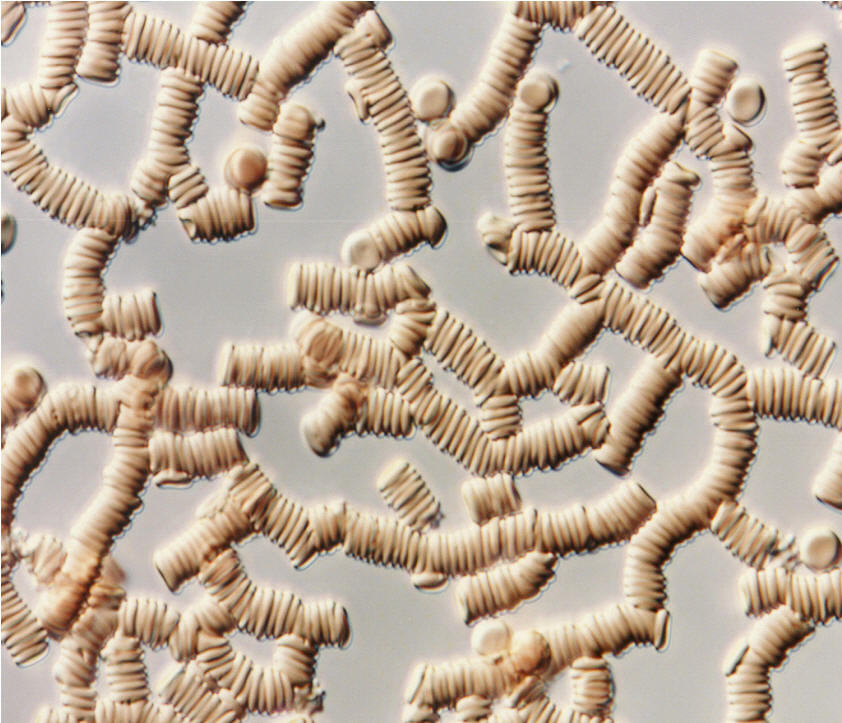KOC UNIVERSITY SCHOOL OF MEDICINE
HEMORHEOLOGY, HEMODYNAMICS AND VASCULAR BIOLOGY LABORATORY
|
Red blood cell aggregation Red blood cells (RBC) aggregate at stasis or at low shear rates, to form regular rouleaux (as seen in the picture on the right). This special way of clumping requires the presence of fibrillar macromolecules in the suspending medium, therefore RBC aggregation does not take place in simple salt solutions (e.g., PBS). RBC aggregation is a reversible
process; aggregates are dispersed into individual cells if affecting shear
forces increase. Accordingly, RBC aggregation dominates under low flow
conditions and determine the fluidity of blood under these conditions.
RBC aggregation can be measured using various approaches, the most widely used method being the measurement of erythrocyte sedimentation rate (ESR). This is the basis of the very widely used, non-spesific blood test (ESR) to detect inflammatory conditions and to monitore disease activity. RBC aggregation can also be quantified by monitoring the light transmittance (or reflectance) of blood samples during aggregation process. RBC aggregation is expected to have significant impact on blood flow and tissue perfusion, based on the relationship between low shear blood viscosity and aggregation. However, the influence of aggregation on in vivo hemodynamics might be quite complex, and the consequence of an alteration in aggregation may depend on the mechanism and extent of RBC aggregation as well as the type and physiological status of the tissue under consideration. RBC aggregation is found to be enhanced during various disease processes, including inflammatory conditions, infections, hematological disorders, metabolic diseases.
|
